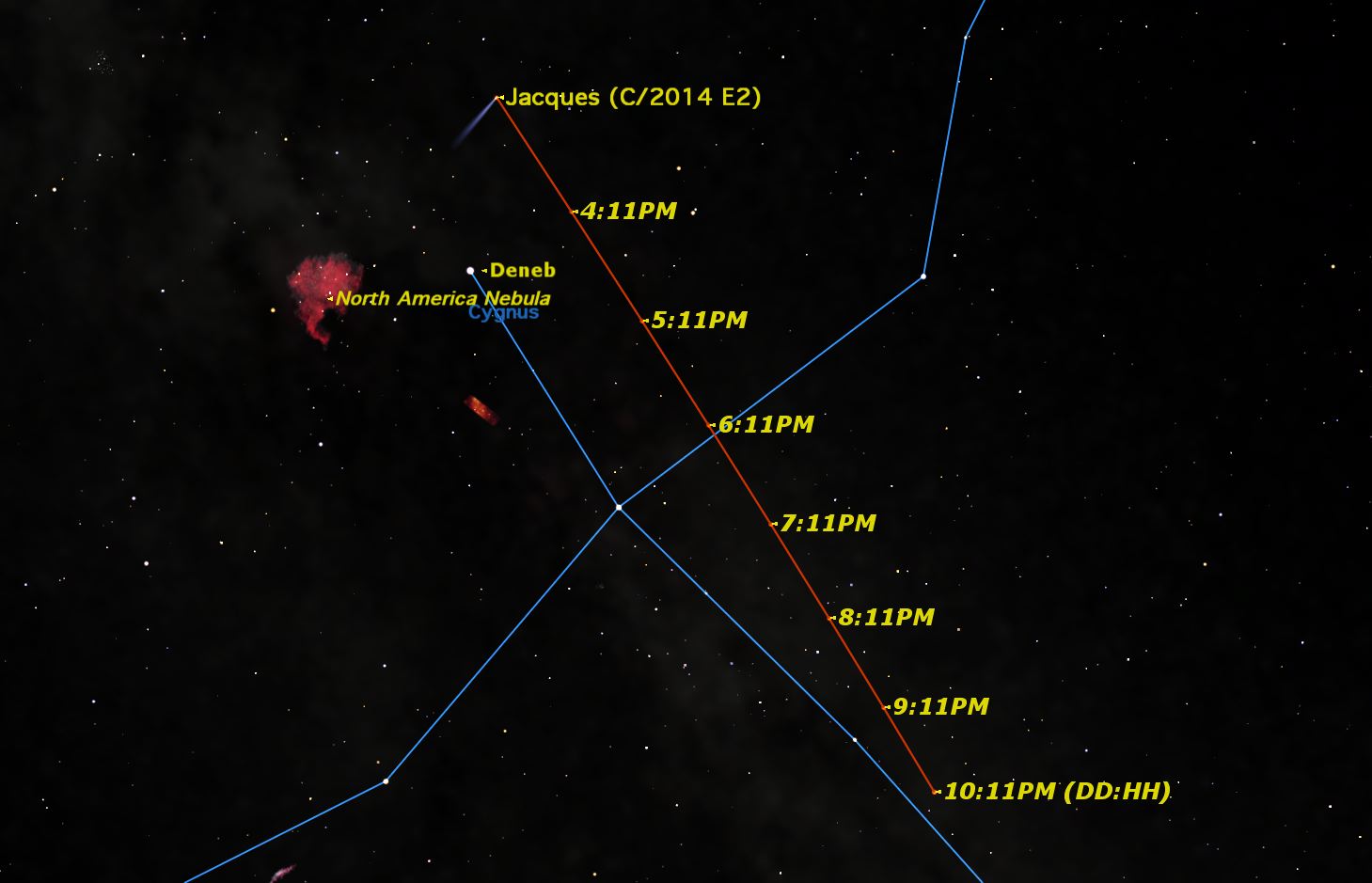 | |||||||||||||||||||||||||||||||||||||||||||||||
| For education orders please call 1-877-290-8256. Welcome to the September First Week Featured Article! A Binocular Comet: Jacques Geoff Gaherty, Starry Night EducationAstronomers are often asked, "When’s the next comet?" The answer is that there are always dozens of comets visible in the sky, but most of them are too faint to be seen without a large telescope. About once every year or two there is a comet bright enough to be visible with small telescopes or binoculars, and we have such a comet right now. 
Get out your binoculars and have a look for Comet Jacques as it moves down the constellation Cygnus Credit: Starry Night software. This comet, officially known as Comet C/2014 E2, was discovered on March 13 by a team of Brazilian astronomers using the 17.7-inch (0.45-meter) at the Southern Observatory for Near Earth Asteroids Research (SONEAR). The comet was then quite dim, and remained dim for most of the summer. Reports that it had brightened started appearing a few weeks ago, and recently quite a few astronomers have reported on the internet that it has turned out to be quite a nice comet. Comet Jacques (named after its principal discoverer, Cristóvão Jacques Lage de Faria) is now moving southward through the constellation Cygnus, making it well placed for observers anywhere in the northern hemisphere. It is almost directly overhead, close to the bright star Deneb. The chart plots its position at 11 p.m. EDT for the next week. To see the comet, you will need at least a 7x50 binocular. The bright stars of Cygnus make easy landmarks for locating the comet. As you can see from the chart, this comet is moving quite rapidly across the sky. This is because it is relatively close to the Earth at present, having been closest on August 28. It is now retreating both from the Earth and from the Sun, so will be fading quite rapidly. This week may be our last opportunity to observe it, especially since the Moon is getting brighter. What will you see in binoculars or a telescope? The nucleus of the comet will look similar to a bright galaxy. You probably won’t see much of a tail, though this should appear in photographs. The comet will be passing in front of the Milky Way star fields of Cygnus, and close to several bright nebulae, making many excellent photo opportunities for deep sky photographers. As always, we welcome any photographs you may obtain of this interesting little comet. |
| ||||||||||||||||||||||||||||||||||||||||||||||
© 2016 Simulation Curriculum Corp. All Rights Reserved. |
|||||||||||||||||||||||||||||||||||||||||||||||
